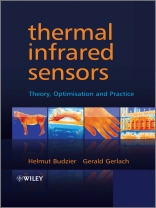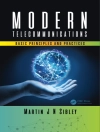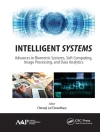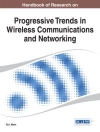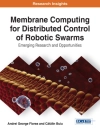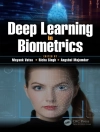The problems involved in designing optimal infrared (IR) measuring
systems under given conditions are commensurately complex. The
optical set-up and radiation conditions, the interaction between
sensor and irradiation and the sensor itself, determine the
operation of the sensor system. Simple calculations for solving
these problems without any understanding of the causal
relationships are not possible.
Thermal Infrared Sensors offers a concise explanation of
the basic physical and photometric fundamentals needed for the
consideration of these interactions. It depicts the basics of
thermal IR sensor systems and explains the manifold causal
relationships between the most important effects and influences,
describing the relationships between sensor parameters such as
thermal and special resolution, and application conditions.
This book covers:
* various types of thermal sensors, like thermoelectric sensor,
pyroelectric sensors, microbolometers, micro-Golay cells and
bimorphous sensors;
* basic applications for thermal sensors;
* noise – a limiting factor for thermal resolution and
detectivity – including an outline of the mathematics and noise
sources in thermal infrared sensors;
* the properties of IR sensor systems in conjunction with the
measurement environment and application conditions;
* 60 examples showing calculations of real problems with real
numbers, as they occur in many practical applications.
This is an essential reference for practicing design and optical
engineers and users of infrared sensors and infrared cameras. With
this book they will be able to transform the demonstrated solutions
to their own problems, find ways to match their commercial IR
sensors and cameras to their measurement conditions, and to tailor
and optimise sensors and set-ups to particular IR measurement
problems. The basic knowledge outlined in this book will give
advanced undergraduate and graduate students a thorough grounding
in this technology.
สารบัญ
Preface.
List of Examples.
List of Symbols.
Indices.
Abbreviations.
1 Introduction.
1.1 Infrared Radiation.
1.1.1 Technical Applications.
1.1.2 Classification of Infrared Radiation.
1.2 Historical Development.
1.3 Advantages of Infrared Measuring Technology.
1.4 Comparison of Thermal and Photonic Infrared Sensors.
1.5 Temperature and Spatial Resolution of Infrared Sensors.
1.6 Single-Element Sensors Versus Array Sensors.
References.
2 Radiometric Basics.
2.1 Effect of Electromagnetic Radiation on Solid-State Bodies.
2.1.1 Propagation of Radiation.
2.1.2 Propagation in Lossy Media.
2.1.3 Fields at Interfaces.
2.1.4 Transmission Through Thin Dielectric Layers.
2.2 Radiation Variables.-
2.2.1 Radiation-Field-Related Variables.
2.2.2 Emitter-Side Variables.
2.2.3 Receiver-Related Variables.
2.2.4 Spectral Variables.
2.2.5 Absorption, Reflection and Transmission.
2.2.6 Emissivity.
2.3 Radiation Laws.
References.
3 Photometric Basics.
3.1 Solid Angle.
3.1.1 Definition.
3.1.2 Solid Angle Calculations.
3.2 Basic Law of Photometry.
3.2.1 Definition.
3.2.2 Calculation Methods and Examples.
3.2.3 Numerical Solution of the Projected Solid Angle.
References.
4 Noise.
4.1 Mathematical Basics.
4.1.1 Introduction.
4.1.2 Time Functions.
4.1.3 Probability Functions.
4.1.4 Correlation Functions.
4.1.5 Spectral Functions.
4.1.6 Noise Analysis of Electronic Circuits.
4.2 Noise Source in Thermal Infrared Sensors.
4.2.1 Thermal Noise and tan delta.
4.2.2 Current Noise.
4.2.3 1/f Noise.
4.2.4 Radiation Noise.
4.2.5 Temperature Fluctuation Noise.
References.
5 Sensor Parameters.
5.1 Responsivity.
5.1.1 Introduction.
5.1.2 Black Responsivity.
5.1.3 Spectral Responsivity.
5.1.4 Signal Transfer Function.
5.1.5 Uniformity.
5.2 Noise-Equivalent Power NEP.
5.3 Detectivity.
5.4 Noise-Equivalent Temperature Difference.
5.5 Optical Parameters.
5.6 Modulation Transfer Function.
5.6.1 Definition.
5.6.2 Contrast.
5.6.3 Modulation Transfer Function of a Sensor.
5.6.4 Measuring the Modulation Transfer Function.
References.
6 Thermal Infrared Sensors.
6.1 Operating Principles.
6.2 Thermal Models.
6.2.1 Simple Thermal Model.
6.2.2 Thermal Layer Model.
6.3 Network Models for Thermal Sensors.
6.4 Thermoelectric Radiation Sensors.
6.4.1 Principle.
6.4.2 Thermal Resolution.
6.4.3 Design of Thermoelectric Sensors.
6.5 Pyroelectric Sensors.
6.5.1 Principle.
6.5.2 Thermal Resolution.
6.5.3 Design of Pyroelectric Sensors.
6.6 Microbolometers.
6.6.1 Principle.
6.6.2 Thermal Resolution.
6.6.3 Design of a Microbolometer Array.
6.6.4 Read-Out Electronics of Microbolometers.
6.7 Other Thermal Infrared Sensors.
6.7.1 Bimorphous Infrared Sensors.
6.7.2 Micro-GOLAY Cells.
6.8 Comparison of Thermal Sensors.
References.
7 Applications of Thermal Infrared Sensors.
7.1 General Considerations.
7.2 Pyrometry.
7.2.1 Design.
7.2.2 Emissivity of Real Emitters.
7.3 Thermal Imaging Cameras.
7.3.1 Design.
7.3.2 Calibration of Thermal Imaging Cameras.
7.4 Passive Infrared Motion Detector.
7.4.1 Design.
7.4.2 Infrared Optics.
7.4.3 Signal Processing.
7.5 Infrared Spectrometry.
7.5.1 Radiation Absorption of Gases.
7.5.2 Design of an Infrared Spectrometer.
7.6 Gas Analysis.
References.
Appendix A: Constants.
Appendix B: PLANCK?s Law of Radiation and Derived Laws.
Appendix C: Calculation of the Solid Angle of a Rectangular Area.
Further Reading and Sources.
Index.
เกี่ยวกับผู้แต่ง
Professor Gerald Gerlach, Department of Electrical Engineering, Dresden University of Technology, Germany
Professor Gerlach is Head of the Solid State Electronics Laboratory at Dresden University of Technology. He is Deputy Chairman of EUREL (Convention of National Societies of Electrical Engineers of Europe); Chairman of the German Association of University Professors in Measuring Technology (AHMT) and Vice-President of the German Society for Measurement and Control (GMA). He is a member of the Board of Directors of the SENSOR+TEST conference and an Associate Editor of IEEE Sensors journal. Professor Gerlach is an existing Wiley author having co-authored with Wolfram Dotzel and translated by Dörte Müller, Introduction to Microsystem Technology: A Guide for Students (2008). The German version of this book was published by Hanser in 2006. He has contributed chapters to the book Functional Elements in Precision Engineering and Fabrication in Precision Engineering and Microtechnology (both Hanser). He has also written over 250 journal and conference papers, and holds more than 35 patents.
Dr Helmut Budzier, Department of Electrical Engineering, Dresden University of Technology, Germany
Dr Budzier is a senior researcher at the Solid State Electronic Laboratory at Dresden University of Technology. His main research interests include infrared systems, sensors, IR applications and uncooled IR cameras.
